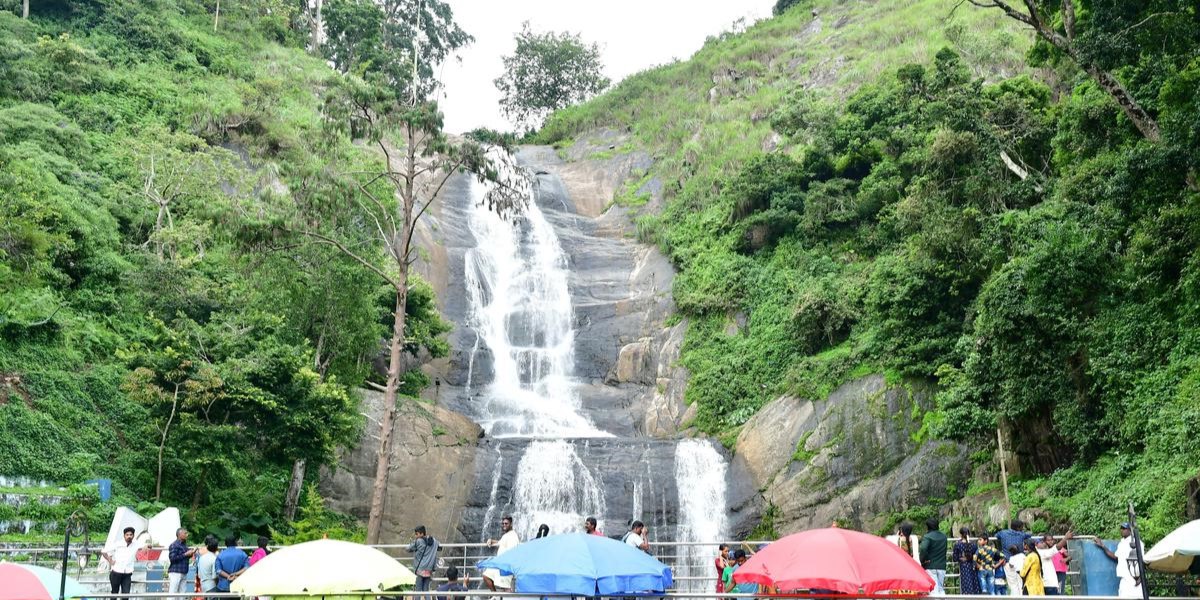Madurai Tourist Places

Mariamman Water Tank
Madurai
The tank is 1000 feet in length and 950 feet in width. The tank's center is home to a mandapamcum Lord Vigneshwara temple. This is where Thirumalai Neicker, the king, excavated the soil for the bricks needed to build his palace, Thirumalai Mahal. Now, the pit formed from this is called tank. It is roughly equal to the Meenakshi Amman Temple which was constructed in 1645 A.D. This is Tamil Nadu's biggest tank.

Koodal Azhagar Temple
Madurai
The Hindu god Vishnu is honored at the Koodal Azhagar temple in Madurai in South India's Tamil Nadu. The temple was built in Dravidian architecture and is honored in the Divya Prabandha. This early medieval Tamil canon, which includes Azhwar saints, celebrates the temple's construction. It is one among the 108 Divyadesam that Vishnu is worshipped. The temple is surrounded by a granite wall that surrounds it, and all its shrines are enclosed within it. The gatweay tower, a five-tiered Rajagopuram, is part of the temple's five-tiered structure. It is believed that the temple was originally built by the Pandyas. Later additions were made by the Vijayanagar Nayak kings, who ordered pillared halls for the major shrines of this temple in the 16th century.

Meenakshi Amman Temple
Madurai
Temples, monuments and ancient cultural wonders abound in Madurai. It is even called "The Athens of the East". Madurai's Meenakshi Sundareswarar Temple is one of the greatest architectural marvels of India. Madurai Meenakshi temple attracts six thousand visitors a day and gets an annual revenue of rupees sixty million. It attained 26th place in the list of top nominees for the new Seven Wonders of the World. Madurai is firmly anchored in Tamil literature and tradition.

Thirumalai Nayakkar Palace
Madurai
Thirumalai Nayak palace is a 17th century palace built by King Thirumalai Nayak in 1636 AD. He was a king of Madurai's Nayaka Dynasty and ruled Madurai between 1623-1659 in Madurai, India. This palace is a blend of Rajput and Dravidian styles. This building can still be seen today. It was once the main Palace where the king lived. The original Palace Complex was four-times larger than the current structure. Tirumalai Nayak Palace in Madurai was one of the South's most famous wonders. This palace is located 2 km east of Meenakshi Amman Temple.

Gandhi Memorial Museum
Madurai
Gandhi Memorial Museum was established in 1959. It is a memorial to Gandhi and is located in Madurai, Tamil Nadu, India. It is also known as Gandhi Museum. It also contains a portion of Gandhi's blood-stained clothing when he was assassinated in the hands of Nathuram Godse. It also contains a letter that Gandhi wrote to Narayanan Sathsangi, Devakottai. This museum also preserves a congratulatory note that Gandhi sent to Subramania Bharati, freedom fighter and poet. Another fascinating letter is that of the Mahatma to Adolf Hitler, addressed as "Dear Friend".

Thirupparankundram Temple
Madurai
Tirupparankunram Murugan temple is a Hindu temple, and one of Six Abodes of Murugan. It can be found at Tirupparankunram. It is believed that the temple was built using rock-cut architecture. According to legend, it is here that Murugan killed the demon Surapadman. He also married Deivayanai (the divine daughter of Indra the king of heaven), and worshipped Shiva there as Parangirinathar.









